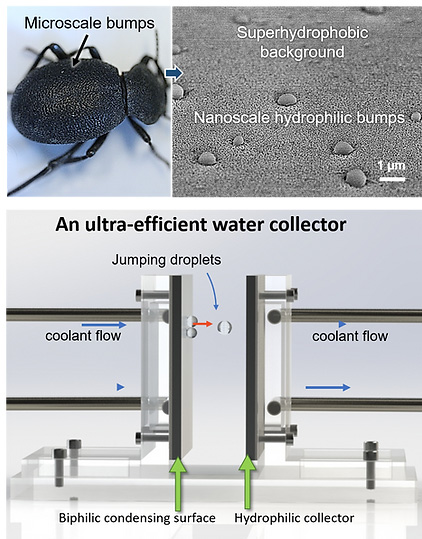For almost all the water harvesting installations in desert lands (e.g., desalination, dewing system, adsorbent-based water collection, etc.), condensation is the ultimate means to capture water from moisture. The efficient condensation strategy is of critical importance for the arid regions to relieve water shortages. The fog-basking desert beetle with hydrophilic bumpy structures has long been considered an excellent biological example with an extraordinary water harvesting rate. While to date, real implementations using beetle-mimetic surfaces are still limited owing to the laborious fabrication of contrasting wetting characteristics in large-scale manufacturing. Additionally, in industrial applications, the benefit of water capture on microscale hydrophilic structures is often outweighed by the liquid pinning effect.

At the AECR Lab, we are studying a facile and scalable approach to fabricate a biphilic nanoscale topography that successfully balances the tradeoff between water nucleation enhancement and rapid liquid transport. By minimizing the hydrophilic bumpy structures to nanoscale, the novel biphilic surface completely changes the random condensation mode, and enables a tunable water nucleation phenomenon. We reveal a strong correlation of characteristic water nucleation spacing on biphilic structural topography. This nucleation tuning effect realizes a synergetic effect for water nucleation and liquid transport on biphilic nanostructures, enabling a threefold water collection rate in arid climates (relative humidity below 40%) as compared to the state-of-the-art superhydrophobic surface.
Our outcome expands the horizon of designing surfaces for tuning condensation dynamics according to different environmental conditions and may lead to important advances in multifunctional applications, particularly for water harvesting in drought-affected regions.